It is not often that significant battles occur on the slopes of tall mountains, as there are usually too many forces involved for such steep terrain. The slave revolt, however, was unique, in that it was led by the gladiator Spartacus, a man with a sound knowledge of tactics, fighting against Romans who dismissed the slaves as a band of criminals begging to be slaughtered. This combination of factors led to brave maneuvers and fierce fighting on the slopes of a world-famous volcano, many decades before its legendary eruption.
Spartacus is an interesting figure; we know very little about him. For example, the most basic aspect of his origin could be very different based on how you view the facts. Spartacus was often called the Thraex, meaning both Thracian, hailing from southeastern Europe, or so called because of his gladiatorial fighting style resembling Thracian combat, though Spartacus may have fought more as the heavier Murmillo gladiator type.
The most accepted story is that he was an auxiliary with the Roman armies. That he was a Thracian or another nationality, and he made mistakes leading to his enslavement. This would explain his leadership and tactical skills, and is what we see in many of the sources.
Spartacus and his band of gladiators and other slaves broke out of their gladiator school (ludus), in Capua, in 73 BCE. Less than 100 knew of the plot, and these were largely the gladiators. Fighting with stolen kitchen utensils, they quickly looted the armory and gained more followers by the minute. The men stormed out of Capua but quickly turned to fight off a small pursuing force, before deciding to head to Vesuvius.
On the way, leaders were chosen and included Spartacus, and two Gauls, Crixus, and Oenomaus. The group of perhaps 200, swelled all the larger as hundreds of slaves, and even some free men who were sick of their lives, joined the cause. Vesuvius was chosen because of its natural defenses, which would give Spartacus time to plan his next actions, but threatened to trap the men on the slopes as only one side was considered traversable, the other, full of sheer cliffs.
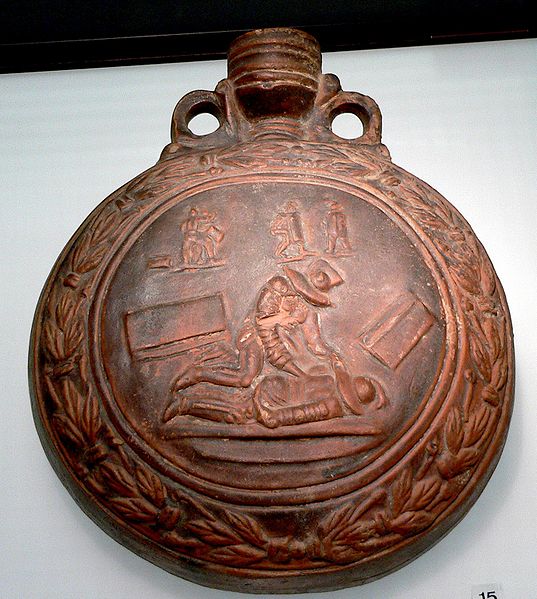
Just such an entrapment occurred with the hastily-assembled Roman “police” force under Praetor Gaius Claudius Glaber. The 3,000 men assembled were not legionaries, but Roman militia, because the Legions were occupied both in Spain and in Asia Minor, but also because Rome did not view the revolt as a serious threat. There was certainly a significant amount of men with Spartacus, possibly more than Glaber’s militia force, but the fact that many were gladiators was simply not deemed important.
It was thought that any Roman force would make quick work of the rebels or simply settle in to starve them out. Spartacus and his group meanwhile, continued to fortify their position and bring in more men from all over the surrounding areas.
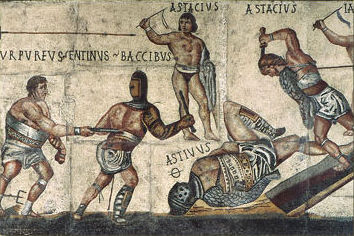
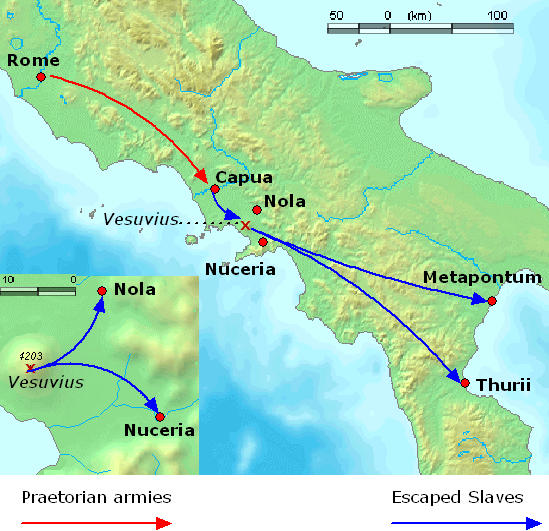
Glaber marched straight to Vesuvius and set up a camp on the slope, blocking Spartacus in. With the only known route down the mountain blocked, Glaber was content to relax and wait out a siege and use starvation as a weapon. Spartacus had other ideas. The men gathered vines and collected all the rope they had. With this, they quietly rappelled down the previously inaccessible cliffs and gathered on the opposite side of the mountain to Glaber’s camp and perhaps lower as well.
Glaber was so confident in the hopelessness of Spartacus’ position that he seems to have neglected much in the way of scouting or setting up watches as the slaves immediately stormed the Roman camp and began slaughtering everyone. What was supposed to be a simple victory for the Roman militia turned into a massacre as few men escaped alive. Glaber may have been killed in this battle or he is simply left out of the remainder of the tale, a show of how inconsequential the Romans viewed this thrown together force.
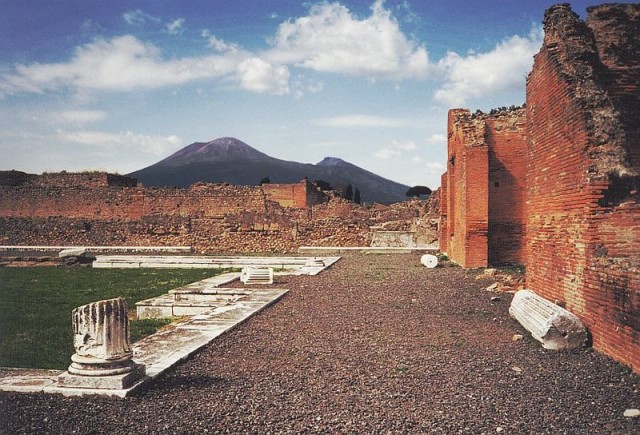
Spartacus’ force had won a great victory, and renewed their freedom by escaping the siege, but they could not count on those tactics working twice so they moved south from Vesuvius. They soon faced another force, likely a militia again, but possibly a legion, and won another victory, seizing the weapons and supplies. The slaves now had the plunder of two Roman forces, giving them enough weapons and armor to form something that actually resembled an army. Slaves and other poor men flocked to this free army as it raided south towards Sicily and grew by the tens of thousands.
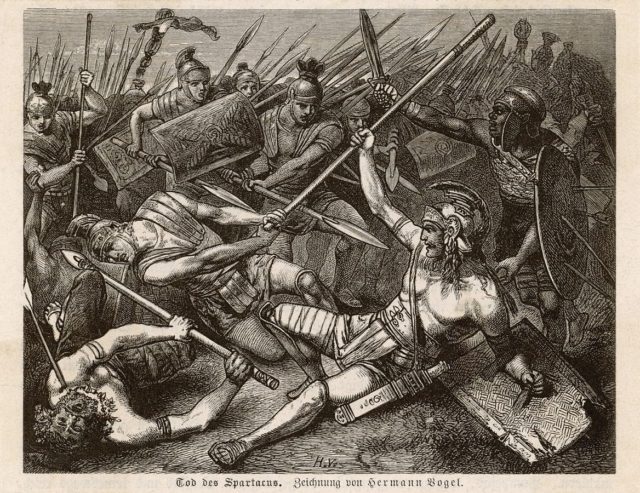
Eventually, a large, professional Roman army was raised to defeat Spartacus who was seen as the ultimate annoyance to the Romans, and a downright nightmare to those in southern Italy. The slave army tried desperately to secure passage to Sicily but their plans backfired and they were eventually forced to face the army of Crassus.
They fought valiantly at the Battle of the Siler River, but were soundly defeated, and all of the rounded up survivors were crucified along the Appian Way as a stern reminder of what happened to rebellious slaves. Spartacus’ rebellion was essentially doomed from the start, he had no hope of sustained success against professional armies and he was deep in Roman territory, yet we still remember his name today, largely due to his string of shocking successes beginning on the slopes of Mount Vesuvius.
By William McLaughlin for War History Online
